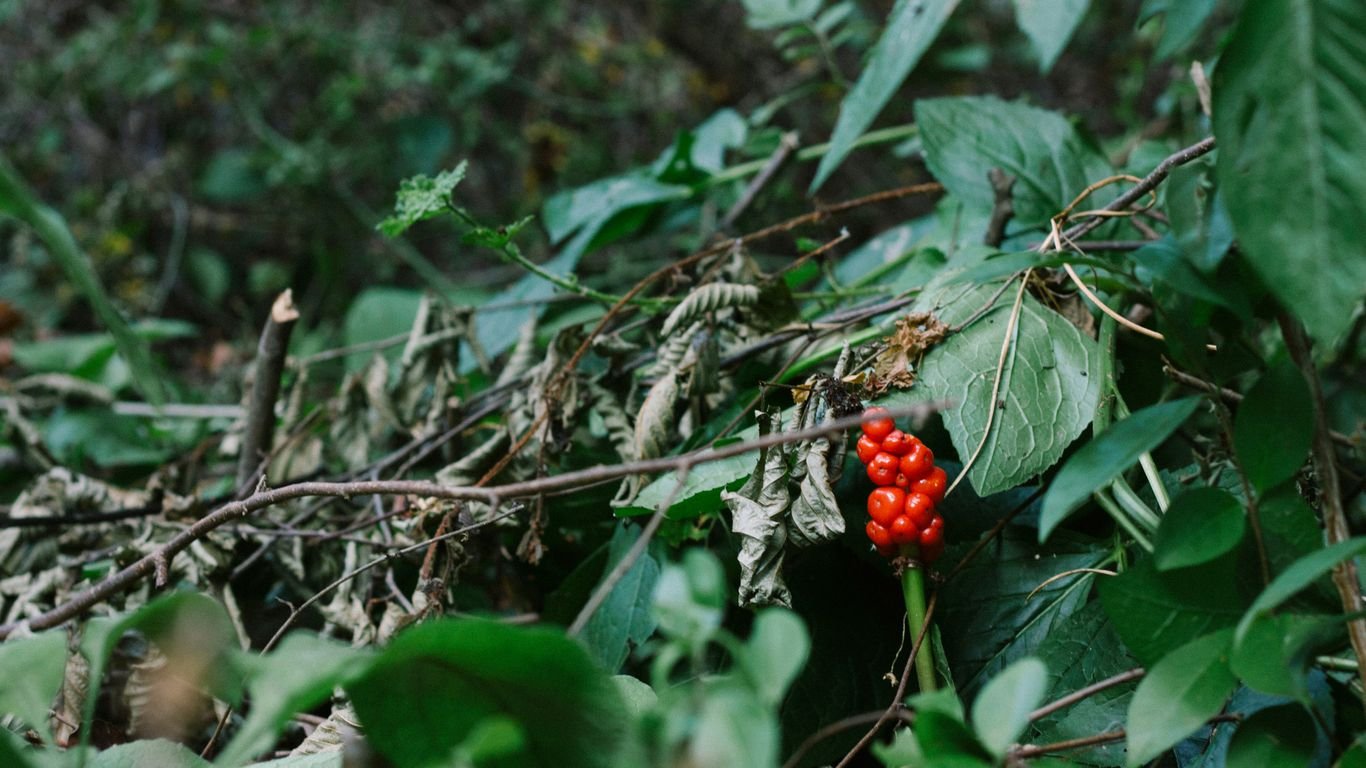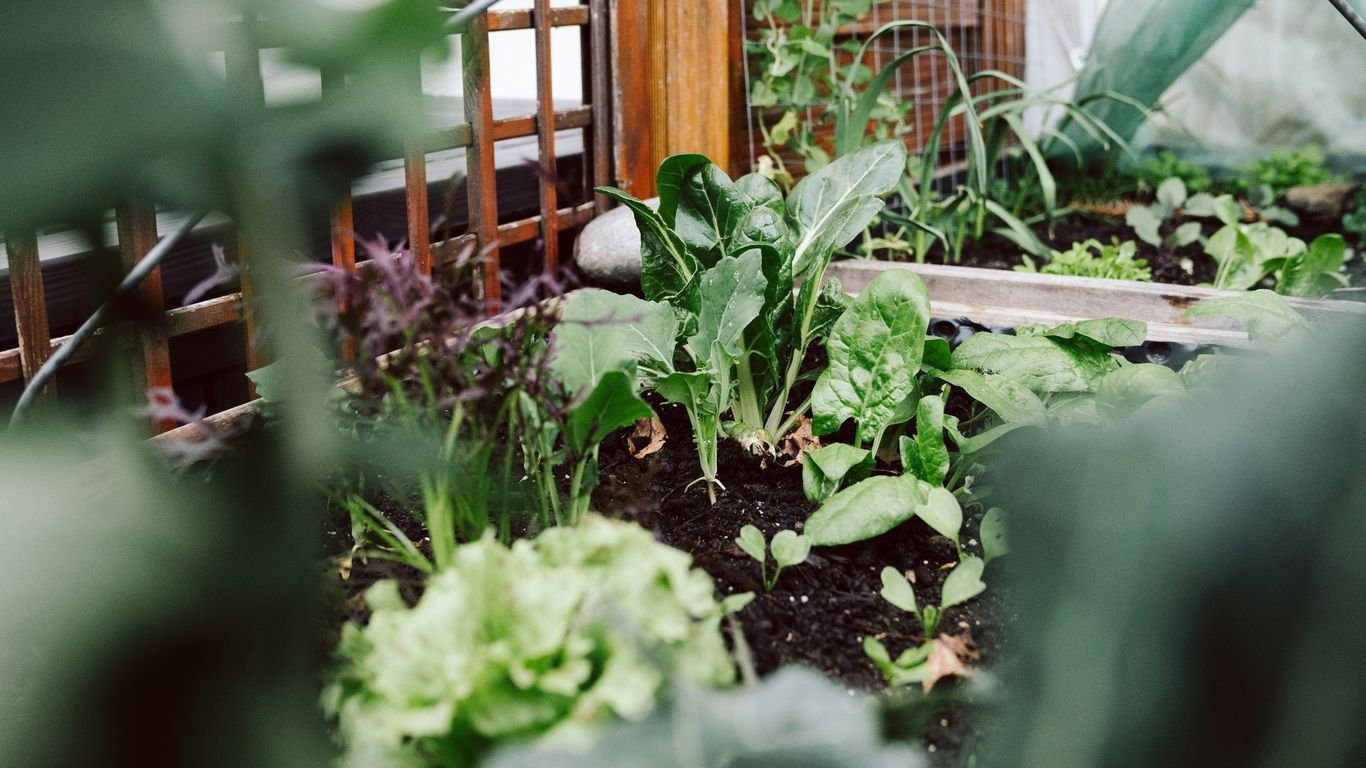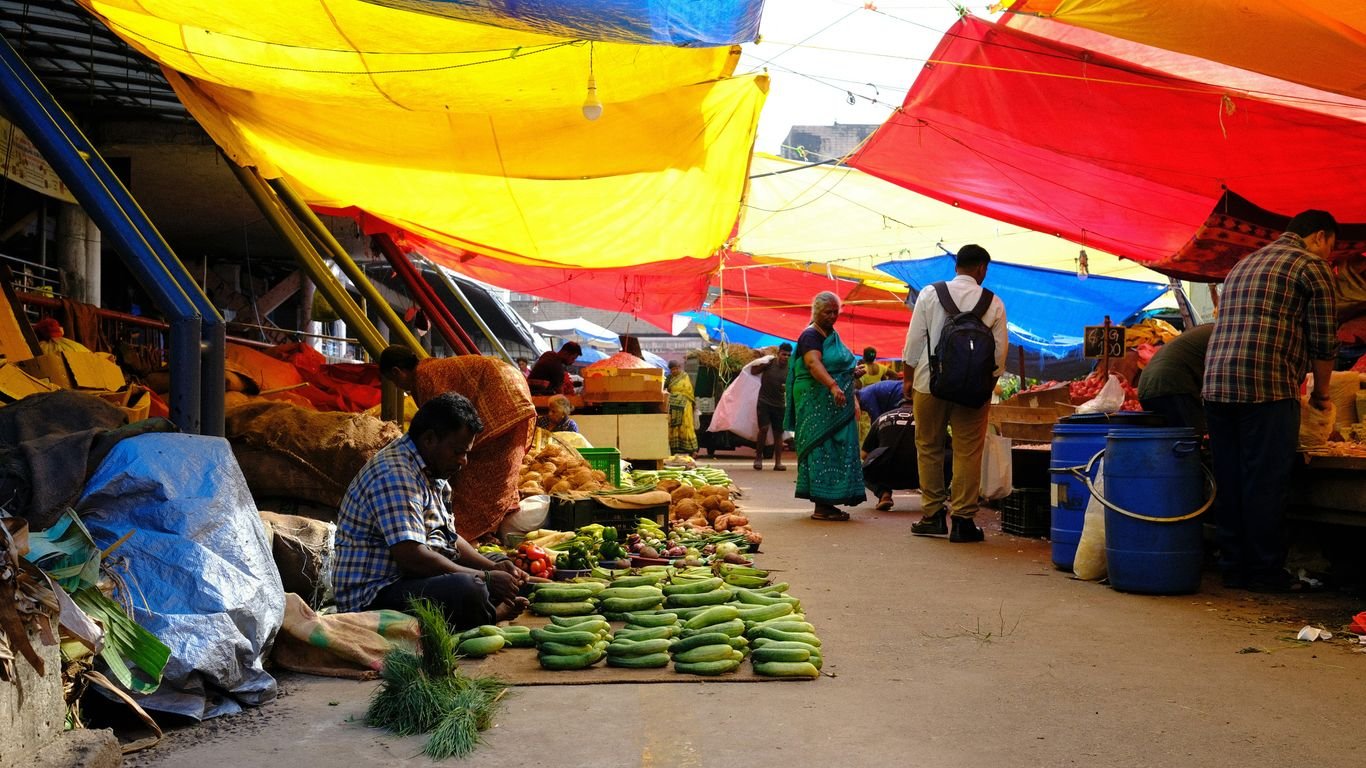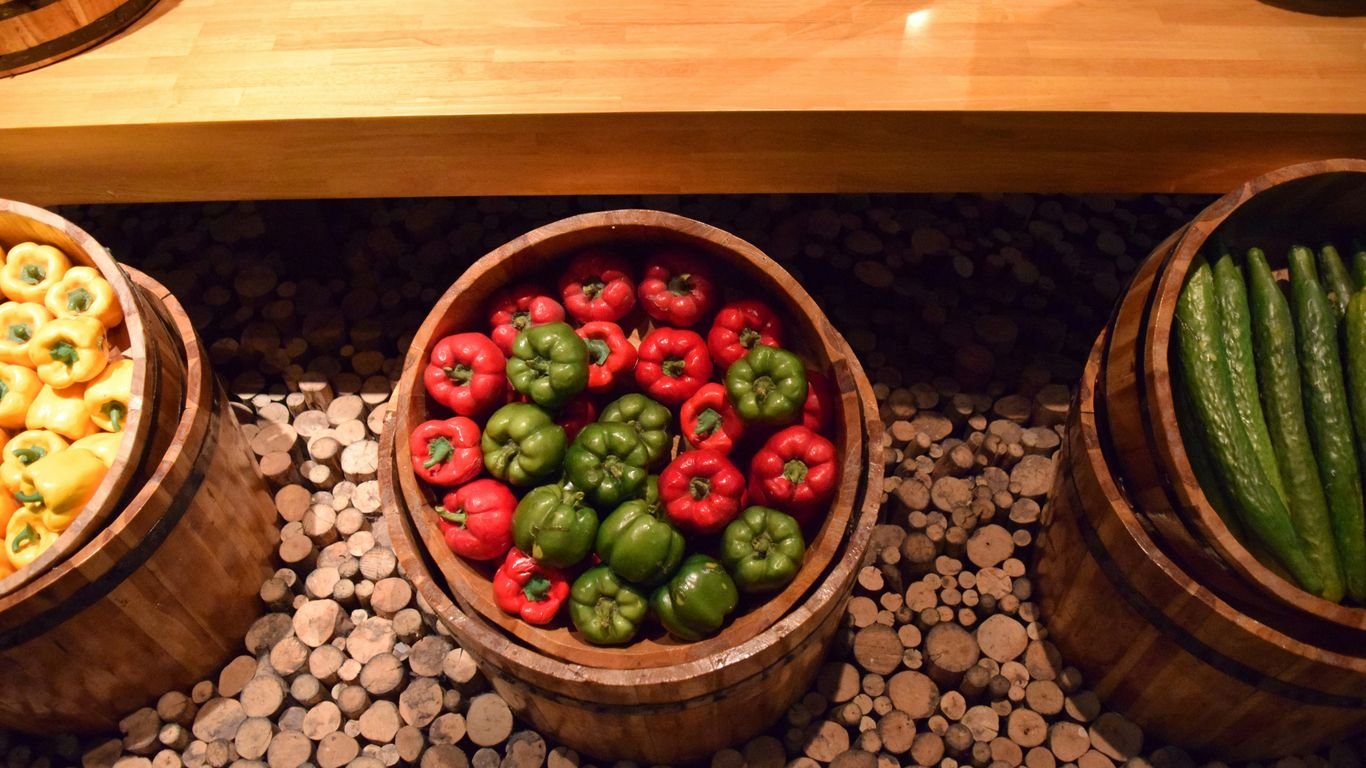Foraging in Georgia: Wild Herbs, Fruits, and Forage-Friendly Nuts

We’ve been thinking a lot lately about what we can find right in our own backyard, or just a short drive away. Georgia is surprisingly full of wild edibles, from tasty berries to useful herbs and nuts. It’s a great way to connect with nature and maybe even add some unique flavors to our meals. This guide is all about exploring the world of foraging in Georgia, helping us discover what’s growing and how to find it safely.
Key Takeaways
- Georgia’s natural spaces, including forests, fields, and even urban green areas, offer a variety of edible plants, herbs, and nuts waiting to be discovered.
- Understanding the seasons is key to successful foraging in Georgia, with different plants peaking in spring, summer, and fall.
- Accurate identification of wild edibles is vital; always be 100% sure of a plant before consuming it, as some look-alikes can be harmful.
- Responsible foraging practices, such as taking only what we need and leaving enough for the environment, are important for sustainability.
- Getting started with foraging in Georgia can involve learning from local experts, using simple tools, and building knowledge over time.
Discovering Georgia’s Wild Edibles
A Bounty in Forests and Fields
Georgia is just bursting with edible plants if you know where to look. We’re talking about more than just the familiar backyard garden stuff. Our state’s forests, fields, and even the edges of our roads are packed with goodies. Think about juicy wild grapes hanging from vines in the woods or tiny chickweed popping up in bare patches of earth. It’s amazing how many things are just hiding in plain sight, waiting to be noticed. We can find edible flowers, roots, leaves, and even parts of trees that are perfectly good to eat. For instance, the bright pink blossoms of the Eastern Redbud can be plucked right off the branch for a sweet, peppery snack, and the young shoots of greenbrier are tender enough to munch on raw. But here’s the thing: not everything wild is safe. Some edible plants have look-alikes that can make you pretty sick, so knowing your stuff is super important.
Beyond the Backyard: What is Foraging?
Foraging is basically the act of searching for and gathering wild food resources. It’s a practice that connects us directly to the natural world around us. Instead of just buying food from a store, we’re learning to identify and harvest plants, fruits, nuts, and sometimes even mushrooms that grow naturally. It’s a way to understand the seasons, the land, and the incredible biodiversity that Georgia offers. It’s not just about finding food; it’s about a deeper connection to nature and a more sustainable way of living. We’re learning to read the landscape and understand what it provides.
Connecting with Nature Through Foraging
When we go out foraging, it’s more than just a treasure hunt for food. It’s a chance to slow down, observe, and really appreciate the environment. We learn to notice the subtle changes in plants throughout the year, the way they grow, and the habitats they prefer. This practice helps us feel more grounded and aware of our surroundings. It’s a way to step away from our busy lives and engage with the natural world on a more intimate level. Plus, sharing this experience with others, learning from local experts, and building our knowledge together makes it even more rewarding. It’s about community, learning, and a shared appreciation for the wild bounty around us.
Here are a few things we look for:
- Leaves and Greens: Tender young leaves are often best before the plant gets too mature.
- Fruits and Berries: These are usually the most recognizable, but always be sure of identification.
- Nuts and Seeds: A great source of energy, especially in the fall.
- Roots and Tubers: These often require more effort to harvest and identify correctly.
Foraging is a skill that develops over time. It requires patience, observation, and a healthy respect for the natural world. Don’t rush the process; enjoy the learning journey.
Where to Find Your Forageables in Georgia
So, you’re ready to start looking for wild edibles in Georgia? That’s awesome! The good news is, our state is packed with places where you can find all sorts of goodies. You don’t need to travel far to find nature’s pantry.
Forests, Floodplains, and Parks
Our forests are probably the first place that comes to mind, and for good reason. Places like the Chattahoochee-Oconee National Forests are teeming with possibilities. Think about Black Walnut trees scattered throughout, or hickory nuts waiting to be discovered. The floodplains, especially around rivers like the Ocmulgee near Macon, are also fantastic spots. These areas often have richer soil, supporting plants like chickweed and chicory. And don’t forget our state parks! From Tallulah Gorge to Amicalola Falls, these protected areas are often managed in ways that allow native edible plants to thrive. We’ve found daylilies growing wild along trails in places like Vogel State Park, and elderberries are common near water sources in many parks.
Urban Green Spaces and Roadside Finds
Who knew you could forage in the city? It’s true! Even in urban areas, we can find edible plants. Look in parks, along greenways, and even in neglected patches of land. Chickweed and dandelion are surprisingly common in lawns and disturbed soils around Atlanta and Savannah. Roadside areas can also be productive, though we always need to be cautious about pollution. We’ve spotted chicory growing along highway shoulders, and you might find lamb’s quarters popping up in any open, disturbed soil. Just remember to be extra careful about what’s growing near busy roads.
Wetlands and Mountainous Regions
Georgia’s diverse geography means different edibles pop up in different places. Our wetlands, like those in the Okefenokee National Wildlife Refuge, are home to plants like groundnut and certain types of Smilax (greenbrier). These damp environments create unique habitats. Up in the mountains, especially in the Blue Ridge region, you’ll find different nut trees like hickory, and plants that prefer cooler, higher elevations. Black Rock Mountain State Park is a great example of a mountainous area where you might find unique foraging opportunities. It’s all about understanding the microclimates and what thrives in them.
Here’s a quick look at some common finds and where we’ve spotted them:
- Black Walnut: Chattahoochee-Oconee National Forests, Ocmulgee River floodplain
- Chickweed: Piedmont National Wildlife Refuge, urban green spaces
- Chicory: Roadside areas, open fields
- Elderberry: Okefenokee National Wildlife Refuge, along riverbanks
- Hickory Nuts: Chattahoochee-Oconee National Forests, Blue Ridge Mountains
When we’re out foraging, we always try to get a sense of the local ecosystem. Understanding which plants are native and which might be invasive can help us make better choices and appreciate the natural balance. It’s also a good idea to check with your local county extension office for specific guidance on fruit and nut cultivation in Georgia, as this knowledge can sometimes translate to understanding wild varieties. local county extension office
Remember, the best foraging spots are often those that are less disturbed and have healthy plant populations. We always aim to leave a place better than we found it, taking only what we need and ensuring the plants can continue to grow for seasons to come.
Seasonal Delights: When to Forage in Georgia
Knowing when to look for wild edibles in Georgia is half the battle. The state’s climate means we get a pretty long foraging season, but different plants pop up at different times. It’s like a treasure hunt that changes with the calendar.
Spring’s Fresh Growth
When the last frost finally gives up, Georgia starts to wake up, and so do the wild edibles. This is prime time for tender greens and early shoots. We’re talking about things like chickweed, which loves those cool, damp spots after a spring shower, and dandelion greens, which are perfect for a salad if you catch them before they get too bitter. The bright red blossoms of the Eastern Redbud tree are also a treat, adding a splash of color and a mild, sweet flavor to our plates. Don’t forget about wild garlic and onion; they start pushing up through the soil, giving us that familiar pungent kick.
Here’s a quick look at what we can often find in the spring:
- Greens: Chickweed, Dandelion, Stinging Nettle, Wood Sorrel
- Shoots: Greenbrier (young shoots)
- Flowers: Eastern Redbud, Violet
- Roots: Wild Garlic, Wild Onion
- Fruits: Wild Strawberry (late spring)
Spring is a time of renewal, and for us foragers, it means a fresh start with a bounty of young, tender greens and early blossoms. It’s a delicate window, so paying attention to the weather is key.
Summer’s Abundant Harvest
As the days get longer and hotter, the focus shifts from greens to fruits and berries. Summer is when Georgia really shows off its abundance. We’ll be on the lookout for wild berries like blackberries and blueberries, which are usually plentiful in sunny clearings and along trails. Muscadine grapes start to ripen, their sweet, tangy flavor a true taste of Southern summer. Many edible flowers are also in bloom, adding beauty and flavor to our foraging baskets.
Autumn’s Nutty Treasures
Fall is arguably the most exciting season for many foragers, especially those who love nuts. The trees start dropping their treasures, and we can gather acorns, walnuts, and hickory nuts. It’s important to remember that acorns need processing to remove tannins before they’re edible, but once prepared, they’re a fantastic source of food. This season also brings late-season fruits and roots, making it a diverse time for foraging. The crisp air and colorful foliage make it a perfect backdrop for our autumn expeditions.
Identifying Your Wild Finds
Alright, so you’ve ventured out and gathered some interesting things. Now comes the really important part: figuring out exactly what you’ve got your hands on. This isn’t just about curiosity; it’s about safety. Making a positive identification is the absolute first step before you even think about tasting anything. We’ve all heard those stories, and nobody wants to be the main character in a cautionary tale about wild edibles.
Common Edible Herbs and Greens
Georgia’s landscape is dotted with all sorts of leafy greens that are perfectly edible and often quite tasty. Think about things like wild onions and garlic – they’re usually pretty easy to spot by their distinct smell. Then there are greens like dandelion, which we often see as a weed but is actually a powerhouse of nutrients. We also find chickweed, which has a mild, fresh flavor, and purslane, a succulent that grows low to the ground.
Here are a few we often look for:
- Wild Onion/Garlic: Look for the characteristic oniony or garlicky scent when you crush the leaves. They usually have long, thin leaves.
- Dandelion: Recognizable by its jagged leaves and bright yellow flower, followed by a puffball seed head. The leaves are best when young.
- Chickweed: A low-growing plant with small, oval leaves and tiny white, star-like flowers. It has a delicate, slightly sweet taste.
- Purslane: A succulent plant with fleshy, rounded leaves and small yellow flowers. It has a slightly tart, lemony flavor.
Sweet Wild Fruits and Berries
This is where foraging gets really rewarding, especially when you find a patch of ripe berries. In Georgia, we’re lucky to have a variety of wild fruits. Blackberries and raspberries are common finds, often along roadsides or forest edges. You might also stumble upon wild grapes, which can be a bit tart but make great jelly. Elderberries are another great find, though it’s important to know which parts are edible and how to prepare them. And don’t forget about serviceberries, which look a bit like blueberries and have a sweet, almond-like flavor.
When you’re looking for fruits and berries, remember:
- Color is Key: Ripe berries are usually vibrantly colored. Avoid anything that looks dull, bruised, or moldy.
- Smell Test: Ripe fruits often have a pleasant, sweet aroma.
- Texture: Berries should feel plump and firm, not mushy.
Nutty Goodness: Acorns to Walnuts
Fall is prime time for nuts! While we might think of cultivated walnuts and pecans, Georgia also offers wild versions. Black walnuts are abundant in many areas, though they have a strong flavor and a tough shell. Hickories are another great find, with several varieties offering delicious nuts. Even acorns, from various oak trees, can be a food source, but they require processing to remove tannins.
Identifying nuts involves looking at the tree itself, the shape of the nut, and the husk or shell it comes in. It’s a bit like a puzzle, and each piece of information helps confirm your find. Don’t forget to check for insect damage; you want the plumpest, healthiest nuts you can find.
Remember, when in doubt, leave it out. Using a good field guide specific to our region or consulting with experienced local foragers is always the best way to build your confidence in identifying these wild treasures.
Foraging Responsibly in Georgia
When we head out to explore Georgia’s wild bounty, it’s super important to remember we’re guests in nature’s house. We want to make sure that these wild spaces stay healthy and abundant for everyone, and for generations to come. It’s not just about what we can take, but also about what we leave behind.
Respecting Nature’s Balance
Think of it like this: if you find a patch of delicious wild berries, you wouldn’t want to strip it bare, right? We should always aim to take only what we need and leave plenty for the plants to reproduce and for other creatures to enjoy. This means being mindful of the plant’s health and its surroundings. Never harvest a plant if you’re not 100% sure of its identity. Misidentification can lead to eating something harmful, and that’s a risk we just don’t need to take.
Here are a few guiding principles we try to follow:
- Don’t take more than you can use. If you find a great patch of mushrooms, harvest only a portion, leaving the rest to spore and grow more.
- Avoid damaging the plant or its habitat. When gathering greens, for example, try to snip leaves rather than pulling up the whole plant.
- Consider the ecosystem. Are you disturbing a bird’s nest or trampling delicate wildflowers? Be aware of your impact.
Understanding Local Regulations
Laws about foraging can be a bit tricky, and they change depending on where you are. For instance, foraging in state parks might have different rules than foraging on private land or along roadsides. It’s always a good idea to check the specific regulations for the area you plan to visit. Sometimes, you might need a permit, especially if you’re collecting larger quantities or certain types of plants. We’ve found that looking up Georgia state park rules is a good starting point for public lands.
Leave No Trace Principles
These principles are pretty straightforward and apply to all our outdoor adventures, including foraging. They help us minimize our impact and keep wild places wild.
- Plan ahead and prepare: Know what you’re looking for and the rules that apply.
- Travel and camp on durable surfaces: Stick to trails where possible and avoid trampling vegetation.
- Dispose of waste properly: Pack out everything you pack in, including food scraps.
- Leave what you find: Unless you have explicit permission and are harvesting responsibly, leave plants, rocks, and other natural objects as you found them.
- Minimize campfire impacts: (Less relevant for day foraging, but good to keep in mind for longer trips).
- Respect wildlife: Observe animals from a distance and never feed them.
- Be considerate of other visitors: Share the space and keep noise levels down.
Being a responsible forager means being a good steward of the land. It’s about enjoying the gifts of nature while ensuring they’ll be there for others to discover too. It connects us more deeply to the environment when we treat it with respect.
Getting Started with Foraging Georgia
Essential Foraging Tools
Before we head out into the woods or fields, let’s talk about what you’ll want to bring along. It’s not a lot, but having the right gear makes the experience smoother and safer. Think of it as packing for a mini-adventure.
- A good field guide: This is your best friend. Make sure it’s specific to Georgia or the Southeast. It’ll help you identify plants and, more importantly, avoid the poisonous ones.
- A basket or breathable bag: Avoid plastic bags if you can. They trap moisture and can make your delicate finds wilt or get mushy. Woven baskets are classic for a reason.
- A knife or small trowel: For digging up roots or carefully cutting stems. A sharp knife is also handy for preparing samples.
- Gloves: Some plants have thorns or irritating sap. Gloves protect your hands.
- Water and snacks: You’ll be doing some walking, so stay hydrated and keep your energy up.
Learning from Local Experts
While books and online resources are great, there’s no substitute for hands-on learning. Connecting with people who have been foraging in Georgia for years can really speed up your learning curve. They know the local spots, the subtle signs of edible plants, and the common mistakes beginners make.
- Look for local foraging classes or workshops: Many nature centers, botanical gardens, or even independent foragers offer classes. These are fantastic for direct instruction and Q&A.
- Join a local foraging group or club: These groups often organize group forays where you can learn alongside others. It’s a great way to build a community and share knowledge.
- Find a mentor: If you’re lucky, you might find an experienced forager willing to share their wisdom. This is often the most effective way to learn.
Building Your Foraging Knowledge
Foraging is a continuous learning process. The more you practice and study, the more confident and successful you’ll become. It’s about building a relationship with the natural world around you.
Remember, positive identification is key. When in doubt, leave it out. It’s better to miss out on a potential meal than to risk eating something harmful.
Here’s a simple breakdown of how to approach building your knowledge:
- Start Small: Focus on learning just one or two easily identifiable plants at first. Master those before moving on to others.
- Observe: Pay attention to where plants grow, what they look like throughout the seasons, and what other plants grow nearby.
- Document: Keep a journal of your finds, including photos, locations, and notes on what you learned. This helps reinforce your memory.
- Practice Safe Harvesting: Learn how to harvest plants without damaging the parent plant or its environment. This ensures future growth and sustainability.
Wrapping Up Our Foraging Adventure
So, there you have it! Georgia is really a treasure trove for anyone looking to connect with nature through foraging. We’ve seen how many different herbs, fruits, and nuts are out there, just waiting to be discovered. Remember to always be safe, know what you’re picking, and respect the land. It’s a rewarding way to spend time outdoors, and honestly, it makes you appreciate where food comes from a whole lot more. We hope this guide has sparked your curiosity and given you the confidence to start your own foraging journey right here in Georgia. Happy foraging!
Frequently Asked Questions
What exactly is foraging, and why would we want to do it in Georgia?
Foraging is basically looking for and gathering wild food that grows naturally around us. Instead of just buying everything at the store, we can connect with nature by finding our own edible plants, fruits, and nuts. It’s a cool way to learn about the environment and find some tasty treats right here in Georgia’s forests and fields.
Is it safe to just eat any wild plant we find?
Absolutely not! This is super important. Some wild plants look a lot like edible ones but can be poisonous. We must be really sure about what we’re picking. Learning to identify plants correctly is the first and most crucial step before we ever think about eating them.
Where are the best places to go foraging in Georgia?
Georgia has tons of spots! We can look in forests, along riverbanks, in state parks (but always check the rules first!), and even in green spaces within cities. Different plants like different places, so exploring various environments like mountains, wetlands, and open fields can lead us to different finds.
When is the best time of year to forage in Georgia?
It really depends on what we’re looking for. Spring is great for fresh greens and early blossoms. Summer brings lots of berries and fruits. And autumn is perfect for gathering nuts. Each season offers its own unique bounty, so we can forage almost all year round if we know what to seek.
What are some common wild foods we might find in Georgia?
We can find all sorts of things! Think juicy wild berries like blackberries and elderberries, tender greens like chickweed and dandelion, and even edible flowers like redbud blossoms. For nuts, acorns and hickory nuts are common. It’s amazing how much food nature provides if we know where to look.
What rules do we need to follow when foraging?
We need to be respectful and responsible. This means never taking more than we need, making sure we don’t harm the plants or their homes, and always leaving the area as we found it. It’s also vital to know the local rules, as some places have restrictions on collecting plants. We want to help nature thrive, not hurt it.






